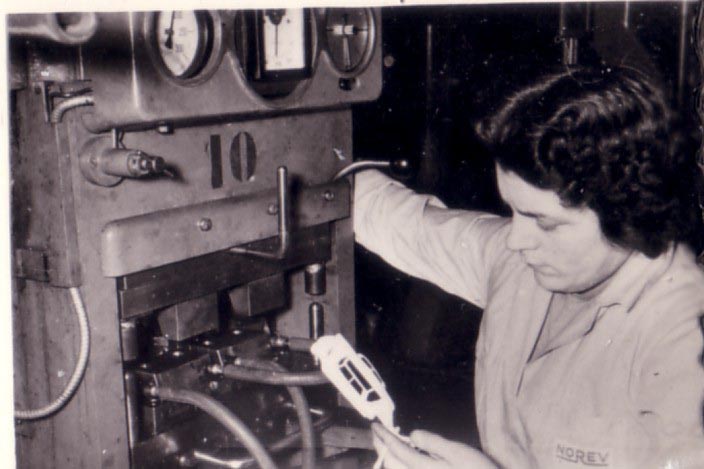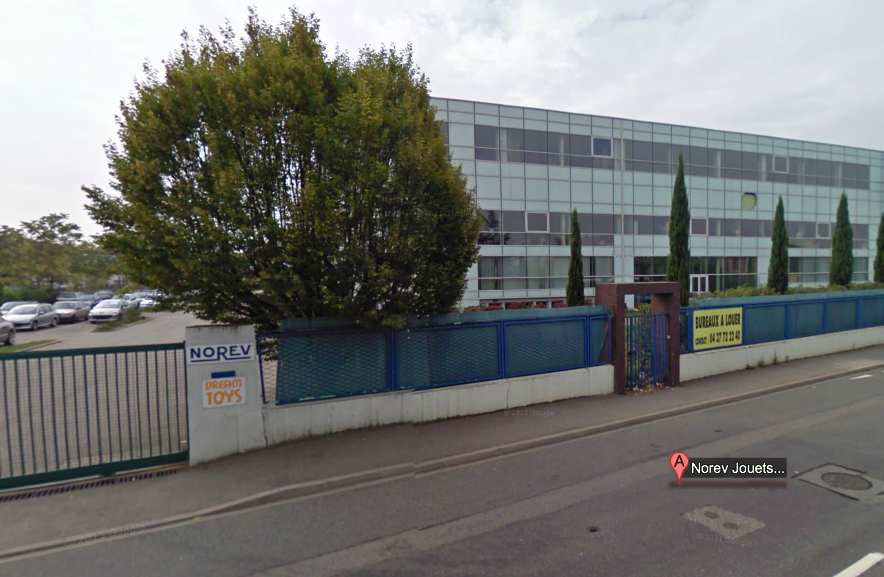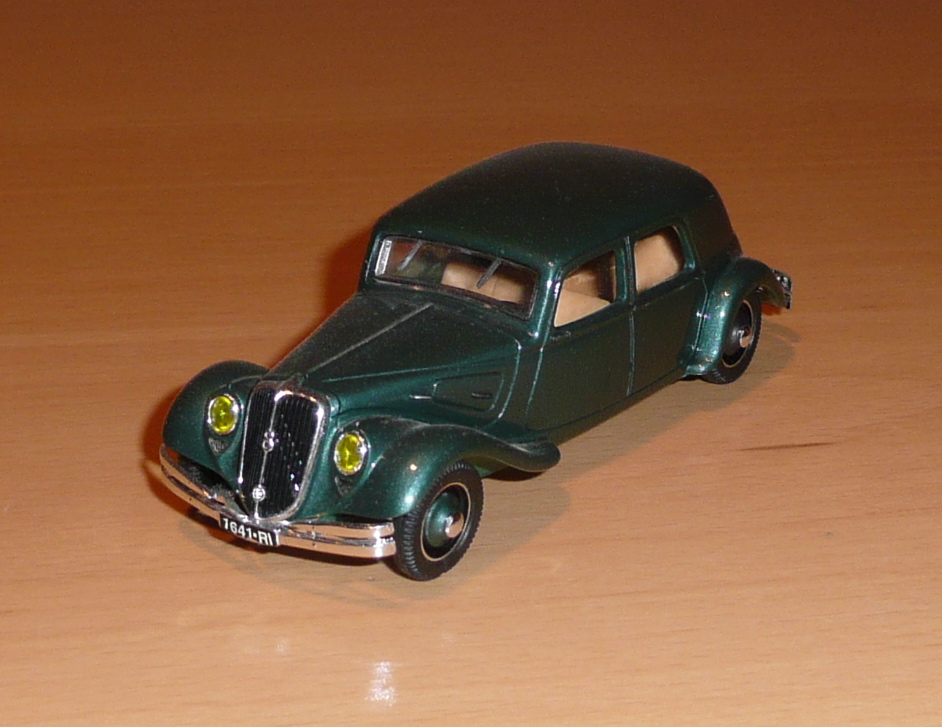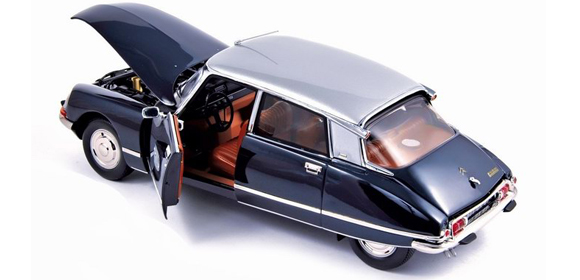by Chris Dubuque (Seattle, WA)……
Many of us car geeks are keen collectors of toys! One of my favorite manufacturers is NOREV of France. Following is some company history I scrounged together with a little help from a few books, a few webs sites, and the French and English Wikipedia sites. Also, there is an interesting French website put together by someone named ‘Erwan’ that has a great chronology of the various NOREV toys. Check Erwan’s site out here.
BIRTH OF NOREV
A man named Joseph Veron, with help from brother Emile (and perhaps a third unnamed brother) are stated to have founded NOREV in 1946. When it came time to choose a name for the new company, they simply spelled their last name backwards!
Between 1946 and 1953, the company produced simple plastic (mostly non-automotive) toys, but starting in 1953, the company started focusing on models of various French cars. Apparently, the founder of the French car manufacturer, Simca (H.T. Pigozzi) took a liking to the Veron brothers and helped them launch their first toy car, the Simca 9 Aronde (1/43 scale).

NOREV 1951 Simca 9 Aronde (photo credit: Erwan)
The first NOREV models were made from plastic. The legend is that NOREV needed to compete with established manufacturers (such as Dinky) and were only able to do so by using a less expensive medium than die-cast metal. While NOREV eventually did start to make a few toys from metal (in 1971), plastic has remained the staple medium for them.
Where did Joseph Veron get his experience with plastics? It appears that Joseph was employed by a French chemical company named Rhodia. Rhodia was associated with the French chemical giant Rhone-Poulenc who had been an early developer of plastics. The name of the particular plastic formula used on these early NOREV toys is called Rhodialite, after the company’s name.

Simca Versailles with Rhodialite Tag
Their original scales were 1:43 and 1:87, but a few other scales were used over the years. Currently, the larger 1:18 scale is widely used by NOREV. The first generation NOREV cars all had red plastic wheels and white tires but by the mid-1950’s some black tires started making an appearance.

NOREV DS19 from the early 1960’s
In 1956, the original factory became too small and they moved to a Lyon suburb called Villeurbanne. Joseph’s brother, Emile, left NOREV in 1961 and started the now well-known Majorette die cast toy company.

Rhodialite DS Body Coming out of the NOREV Mold
Over the years, NOREV launched many different lines, including the Jet-Car series, the Mini-Jet series, the Maxi-Jet series, and the Ligne-Noire series, to name a few.
NOREV OWNERSHIP
The more I researched NOREV, the more I became confused about the various buyouts, mergers, and ownership changes that occurred in the company’s history. We read that in 1980, NOREV somehow morphed into a company called LudOrev, NOREV was then temporarily acquired by Majorette (remember brother Emile’s company?), it was somehow associated with a company called Smoby and then another called Simba-Dickie, it was bought out in 1986 by Marc Fisher Resin (another plastics expert), and then bought out again in 1993 by a different group of investors. We read that manufacturing moved from France to Argentina in an effort to cut costs, and most recently, all NOREV toys seem to be made in China.
NOREV is alive and well today, making (Chinese?) models of modern cars, including the latest Citroëns. But they are still occasionally making runs of their classic products from the past. The latest incarnation of Chinese NOREV toys are very well designed and manufactured, but lack the charm of the earlier French-built toys.

Beautifully Made Modern NOREV DS in 1:18 Scale
Amazingly, the NOREV headquarters are still located near Villeurbanne (70 Avenue de Bohlen, 69120 Vaulx-en-Velin).

NOREV Headquarters
LIGNE-NOIRE SERIES
The quality of NOREV toys varied radically throughout the years – some are terribly crude (but charming) and some are astonishingly detailed and accurate (but less charming). One of my favorite eras of NOREV is in the 1990’s with their upscale Ligne-Noire series that included most of the Chapron DS versions (Le Dandy, Majesty, etc) as well as a series of unusually nice Traction Avant (including the 8-cylinder 22CV!). The precision of the Ligne-Noire molds and the attention to detail make them extraordinarily nice and it is hard to believe that they are made of plastic.

Chapron trio; Majesty, Palm Beach, and Coupe Dandy

Fabled 22CV; 8-cylinder Traction
There are four delightful and unusually rare models from the Ligne-Noire era; the four “prototype” 2CV’s.

2CV Prototypes
The first and earliest prototype is from 1936 (far left). This prototype car spent the war years hidden in the Michelin complex at Clermont Ferrand, disguised as a light-duty truck. Incidentally, this car still exists and is in a private museum in France (Musee de la Rouchetaille, near Lyon). The second car is now referred to as the “Terrasson” and it actually existed too as an early prototype, but it did not survive. The third car is the most famous 2CV prototype, rumored to have been hidden away for many years and was eventually restored in 1968. The last prototype (right), dubbed “Cyclopse” should maybe not be called a prototype at all since it is doubtful that any cars were ever built in this configuration. Sketches dated from the mid-1940’s clearly show this 2CV concept with the headlight in the center of the hood and perhaps a larger engine! Fabian Sabates’ book “La 2CV – 40 ans d’amour” terms this car, “…La voiture du mystère…”. All four of the above 2CV NOREV models were originally very rare. The Cyclopse NOREV is the most difficult to find and it took this author many years to finally track one down.
All four of these 2CV prototypes have been re-released by NOREV, maybe several times now, but not as part of the Ligne-Noire series. These more recent Chinese versions of the 2CV prototypes are not at all valuable, but the original Ligne-Noire versions from the early 1990’s are commanding some pretty high prices, if in the original boxes.
NOREV toys are exceedingly difficult to find in the USA but are widely available on the Internet, including on ebay. Norev also finally has a large and professional website: www.norev.com.


interesting! I’m restoring a Red Baron and a sizzles! Hope all is well!